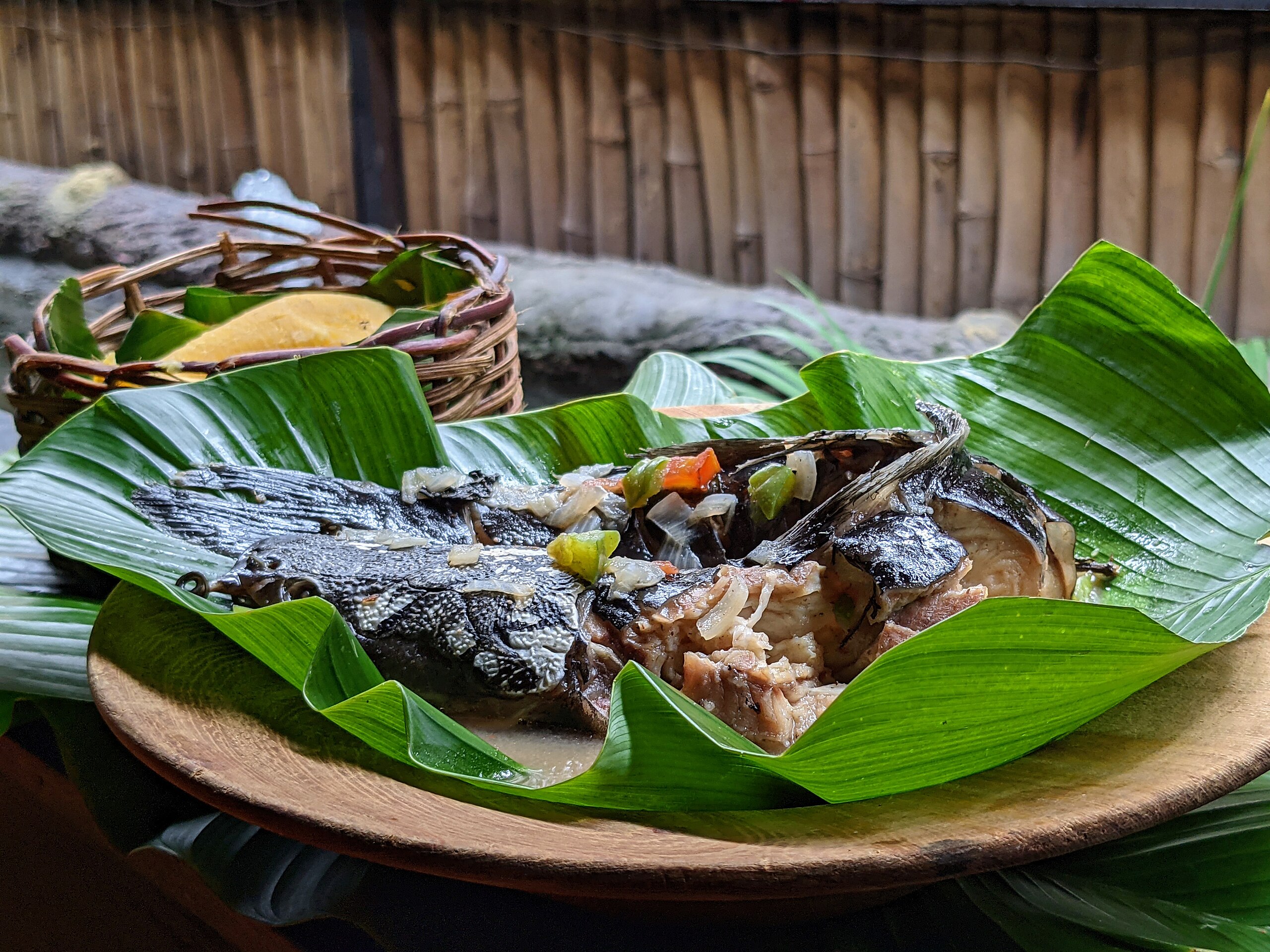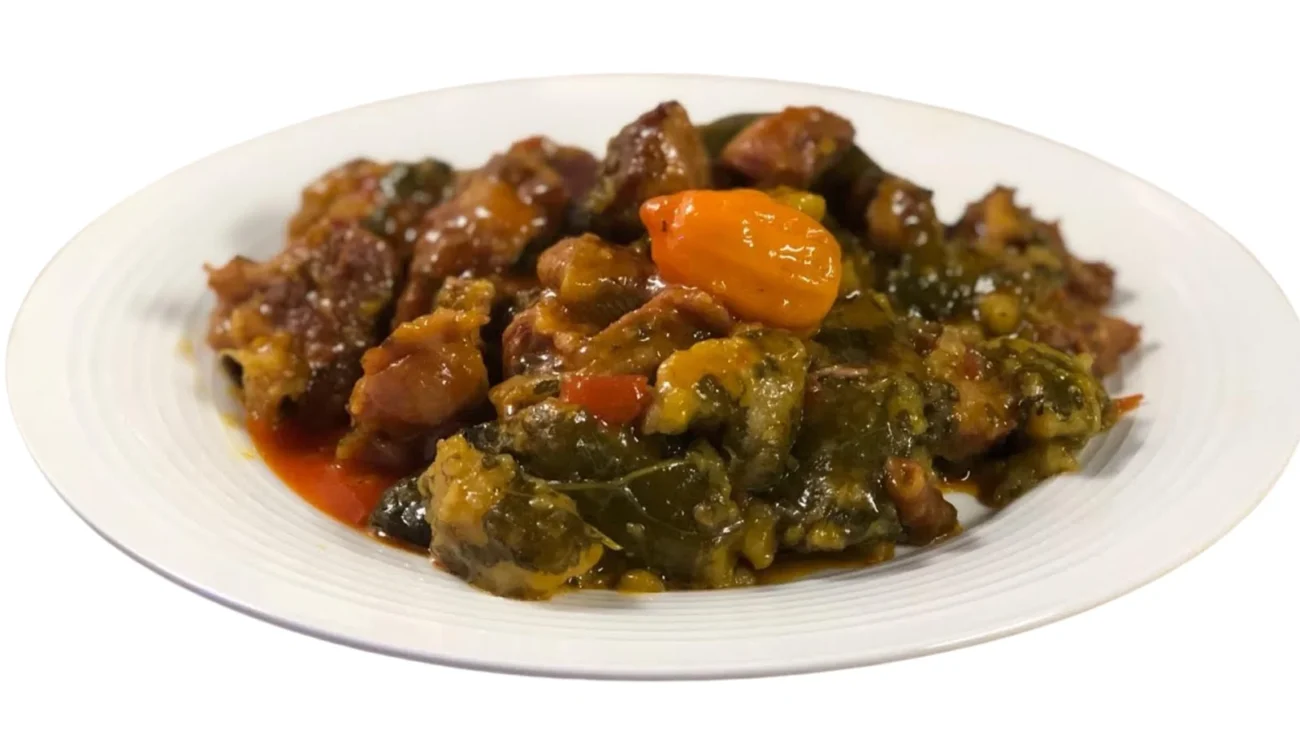Ndomba: Authentic Fish Wrapped in Banana Leaves Recipe from Scratch

Ndomba is a treasured Cameroonian delicacy that transforms fresh fish into an aromatic, flavorful dish by wrapping it in banana leaves. This traditional recipe infuses the fish with subtle, earthy aromas and a hint of smokiness, making it a standout dish in Cameroonian cuisine. In this comprehensive guide, you’ll learn how to prepare Ndomba from scratch with step-by-step instructions, essential ingredients, and expert tips to create an authentic meal that captures the rich culinary heritage of Cameroon.
Table of Contents
- What is Ndomba?
- Cultural Significance
- Essential Ingredients
- Step-by-Step Preparation
- Cooking Tips and Variations
- Serving Suggestions
- Frequently Asked Questions (FAQs)
- Conclusion
What is Ndomba?
Ndomba is a traditional Cameroonian dish where fresh fish is marinated with a blend of spices and wrapped in banana leaves before being steamed to perfection. The banana leaves not only impart a delicate, earthy flavor but also help lock in moisture, ensuring the fish remains tender and juicy. Ndomba is often enjoyed during festive gatherings and family meals, celebrated for its simplicity and depth of flavor.
Cultural Significance
In Cameroon, food is a vital expression of cultural identity and communal bonding. Ndomba is more than just a dish—it’s a culinary tradition passed down through generations. The art of wrapping fish in banana leaves reflects the resourcefulness of local cooking methods and the abundant use of natural ingredients. Served during celebrations, Ndomba brings family and friends together, making it a symbol of unity and cultural pride.
Essential Ingredients
For an authentic Ndomba recipe serving 4–6 people, gather the following ingredients:
Main Ingredients
- Fresh Fish: 1–1.5 kg (preferably whole fish like tilapia, catfish, or snapper, cleaned and scaled)
- Banana Leaves: 6–8 large, fresh leaves (washed and softened; see wrapping instructions)
Marinade and Seasoning
- Fresh Garlic: 4–5 cloves, minced
- Fresh Ginger: 1 tablespoon, grated
- Onions: 1 large, finely chopped
- Scotch Bonnet or Red Chili: 1, finely chopped (adjust for heat)
- Tomatoes: 2 large, blended or finely chopped (optional for a tangy twist)
- Salt and Black Pepper: To taste
- Bouillon Cube: 1 (optional, for added umami)
- Palm Oil or Vegetable Oil: 2–3 tablespoons (optional, for richness)
Additional Flavor Enhancers
- Lime Juice: From 1 lime (optional, for a citrusy brightness)
- Fresh Herbs: Such as thyme or parsley (optional, for garnish)
Step-by-Step Preparation
Preparing the Fish
- Clean the Fish:
Rinse the fish thoroughly and pat dry with paper towels. Ensure the fish is properly cleaned and scaled. Optionally, make shallow slits on both sides to help the marinade penetrate. - Season:
Rub the fish with salt, black pepper, and a squeeze of lime juice. Let it rest for 10–15 minutes.
Seasoning and Marinating
- Prepare the Marinade:
In a large bowl, combine the minced garlic, grated ginger, chopped onions, and finely chopped scotch bonnet pepper. If using tomatoes, add the blended tomato mixture. Dissolve the bouillon cube in a little warm water and mix in along with the palm oil or vegetable oil. Adjust salt and pepper to taste. - Marinate the Fish:
Coat the fish thoroughly with the marinade, ensuring the mixture fills the slits. Cover the bowl and refrigerate for at least 1 hour. For more intense flavor, marinate overnight.
Wrapping with Banana Leaves
- Prepare the Banana Leaves:
Rinse the banana leaves well. To make them pliable, briefly blanch the leaves in boiling water for about 1–2 minutes, then pat dry with a clean towel. - Wrap the Fish:
Place a piece of marinated fish on a banana leaf. Fold the leaf tightly around the fish to create a secure parcel. If needed, tie the package with kitchen twine or use extra strips of banana leaf to secure the wrap. Repeat for all fish pieces.
Steaming Process
- Set Up the Steamer:
Arrange the wrapped fish parcels in a steamer basket, ensuring they are not overcrowded. This allows the steam to circulate evenly. - Steam:
Steam the parcels over boiling water for 25–35 minutes, depending on the thickness of the fish. The fish should be tender, infused with the aromatic flavors, and the banana leaves should impart a subtle earthy aroma. - Check Doneness:
Carefully remove one parcel and unwrap it to check that the fish is fully cooked. It should flake easily with a fork.
Cooking Tips and Variations
- Marination: The longer the fish marinates, the more intense the flavor. Overnight marination is ideal.
- Spice Adjustments: Customize the heat by adjusting the scotch bonnet amount. Remove seeds for a milder version.
- Herbal Notes: Add fresh herbs like thyme or parsley to the marinade for an extra layer of flavor.
- Alternate Wrapping: If banana leaves are unavailable, aluminum foil can be used, though the authentic aroma of banana leaves is highly recommended.
- Protein Alternatives: While Ndomba traditionally features fish, you can experiment with other proteins such as shrimp or even a mix of fish and seafood.
Serving Suggestions
Ndomba is best enjoyed hot and can be served as a main dish or part of a larger meal. Consider these serving ideas:
- With Fufu: Pair Ndomba with fufu (cassava, plantain, or yam) to soak up the flavorful juices.
- With Rice: Serve alongside steamed rice for a complete and hearty meal.
- With Salad: Accompany with a fresh green salad for a contrast in texture and flavor.
- Garnish: Top with a sprinkle of fresh herbs and a wedge of lime for added brightness.
Frequently Asked Questions (FAQs)
Q1: What type of fish is best for Ndomba?
A1: Traditional recipes often use tilapia, catfish, or snapper. Choose a fresh, firm fish that holds up well during steaming.
Q2: How important are banana leaves in this recipe?
A2: Banana leaves are crucial as they infuse the fish with a delicate, earthy flavor and help keep it moist during steaming.
Q3: Can I marinate the fish for longer?
A3: Yes, marinating overnight enhances the flavors significantly. However, even a 1-hour marinade will work well if you’re short on time.
Q4: What if I don’t have a steamer?
A4: You can improvise by placing a rack inside a large pot with boiling water and covering the pot tightly to mimic a steamer.
Conclusion
Ndomba is a delightful representation of Cameroonian culinary tradition—a harmonious blend of marinated fish, aromatic spices, and the natural flavor of banana leaves. This detailed guide has provided you with everything you need to prepare an authentic Ndomba from scratch. Whether you’re serving it at a family gathering or exploring new flavors in your kitchen, this dish is sure to transport you to the heart of Cameroon with every bite.
Feel free to leave your comments, share your variations, or ask any questions below. Enjoy your journey into authentic Cameroonian cuisine!








